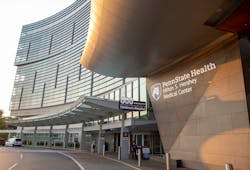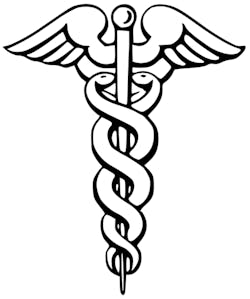How to Break Down Barriers to Energy Efficiency in Health Care
Connect Energy Improvements to Better Revenues
Health care leaders are primarily concerned with supporting the bottom line. The good news is that energy efficiency improvements can achieve that goal.
Research by EnergyStar.gov shows health care organization energy expenditures surpass $6.5 billion per year. However, the same source indicates every dollar a nonprofit health care organization saves on power translates to $20 in revenue for hospitals and $10 for medical offices. Health organizations that save money on energy have funds to reinvest elsewhere.
The initial costs of energy-efficient upgrades can make decision-makers hesitate. However, they may be more open to them once they realize how the changes will lead to long-term gains.
Explore Tax Benefits for Energy-Efficient Upgrades
Commercial green power upgrades are often eligible for tax incentives. People concerned with energy efficiency in health care throughout the United States should learn the key points of the Inflation Reduction Act, which has many perks.
For example, the Investment Tax Credit covers up to 50% of the cost of commercial clean energy upgrades. Eligible buildings also receive tax deductions if they meet certain criteria. These options are excellent ways for people to take advantage of current legislation by using it to make power usage improvements more manageable.
Perform an Energy Audit
It’s often hard for people to agree to make energy efficiency upgrades until they receive data confirming there’s a problem. That’s why performing a power audit is an excellent step to take in the early stages. Health care facilities are often extensive and spread across multiple campuses, so it can be worthwhile to use a submetering strategy. That allows tracking energy usage for specific buildings or pieces of equipment. It’ll also show which areas of a facility to prioritize for improvements.
Energy audit results often reveal surprising findings. They’ll also likely show that people don’t need to make permanent changes to see results. For example, conducting a heat loss survey can help identify systems that need to improve energy efficiency. Fitting these systems with removable insulation helps retain temperatures to save energy costs, according to a blog by Thermaxx Jackets. Plus, maintenance workers can easily take off and replace the insulation when servicing equipment.
Energy audit outcomes can also show that specific departments could benefit most from newer equipment that uses less power. People then learn where such investments would make the biggest impacts.
Encourage Personal Responsibility
It’s now easier than ever for people to gain more visibility in specific aspects of their lives. Many individuals find fitness trackers useful for encouraging more activity or helping them set and achieve goals. However, those gadgets could also be what initially helps someone realize they’re not staying as active as they’d like. Some people have similar revelations about how much energy they use.
Improving energy efficiency in health care is a team effort. Managers should develop easy steps and checks that show how people could do more to reduce their footprints.
That might include putting a PC into low-power mode when someone knows they won’t need to use it again for the next several hours. It could also include reminding people to turn off their medical-office lights before leaving on their lunch breaks or to attend meetings.
Identify Areas of Potential Unnecessary Energy Usage
Even though many health care facilities never close, that doesn’t mean there aren’t effective ways to reduce the energy consumed in them. Feeling overwhelmed can hinder energy-efficiency upgrades, especially if the people overseeing them don’t know how to get started to achieve the best results. One way to solve that problem is to see what those at other facilities have done.
At Singapore’s Ng Teng Fong Hospital, leaders realized that the air-conditioning system ran too frequently, increasing energy costs. It also interfered with comfort, as some staff members wore sweaters to stay comfortable.
One of the changes was to raise the air-conditioning temperature in many hospital areas. Elsewhere, in departments like medical records and logistics, the air conditioning only runs from 8 a.m. to 6 p.m. However, that’s still long enough that the environment stays comfortable even with the air conditioning off.
Link Sustainability to Better Health
The World Health Organization (WHO) describes climate change as humanity’s biggest health threat. The entity warns that climate change will negate decades of global health progress and further widen health inequality gaps. It also harms air and water quality, increases severe weather events, and worsens food insecurity. Health care workers who resist making energy-efficiency improvements must remember that doing so could contradict their foundational aims to help people rather than harm them.
Focusing on energy efficiency in health care is one of many ways such facilities can minimize people’s likelihood of ill health due to climate change. They can also make changes during the construction phase.
One hospital project will use low-carbon concrete in 85% of the construction. The goal is for people to realize anything they do to support sustainability now should improve global health for the long term.
How Will You Improve Energy Efficiency in Health Care?
These are some of the many actionable ways to encourage people to invest in energy-efficient upgrades for health care facilities. Such changes take time, but they typically lead to substantial advantages that manifest relatively quickly.
More EnergyTech exclusives from Revolutionized editor and writer Emily Newton
Making the Distribution Grid work: Demand for Smart Transformers is Rising
What can Universities do to earn an A+ in Renewable Energy use?
Why do Data Centers need their own Microgrid?
---
About the author: Emily Newton is an industrial and tech journalist who’s passionate about how technology is revolutionizing each sector. She has over five years experience writing and editing and enjoys her role as Editor-in-Chief of Revolutionized.
About the Author
Emily Newton
Emily Newton is an industrial and tech journalist who’s passionate about how technology is revolutionizing each sector. She has over five years experience writing and editing and enjoys her role as Editor-in-Chief of Revolutionized.


